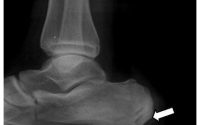Triglycerides the values in the norm
Triglycerides, the values in the norm
The triglycerides They are fat present in the blood that are accumulated with energy reserve function inside the adipocytes, the cells that make up the adipose tissue.
They are structurally made up of 3 fatty acid molecules and one of glycerol and since fatty acids derive from the digestion of food fat foods and glycerol from the metabolism of sugars, it follows that the level of triglycerides is conditioned by the type of power supply.
In fact, the body converts the fats and sugars taken with the diet in triglycerides, fundamental for our body because they are one of its sources of main energies (through fatty acids, in fact, kilocalories are produced, useful for providing energy to the body).
The problem arises when excessive quantities of foods are ingested that contain fats and sugars since the level of triglycerides rises and this becomes a risk to health since it can involve cardiovascular diseases such as arteriosclerosis, heart attack and stroke.
To know the level of circulating triglycerides (triglyceridemia) it is sufficient to undergo a blood test.
The values of a healthy person in good health are between 50 and 150 mg/dl (milligrams per deciliter) while the optimal value is considered below 100 mg/dl.
In particular:
- Normal value, triglycerides lower than 150 mg/dl
- value to the limit, triglycerides between 150 and 200 mg/dl
- High values, triglycerides between 200 and 400 mg/dl
- very high values, triglycerides over 400 mg/dl
In the last case we speak of hypertriglyceridemia associated with high total cholesterol values (HDL and LDL), whose main causes are:
- incorrect eating habits (consumption of foods too rich in fat)
- incorrect life habits (sedentary lifestyle)
- obesity
- diabetes
- alcoholism
- abuse of drugs
For this, the first way to bring the levels to a normal level is to change the eating habits and life (if it is not enough, we will move on to drug therapy).


